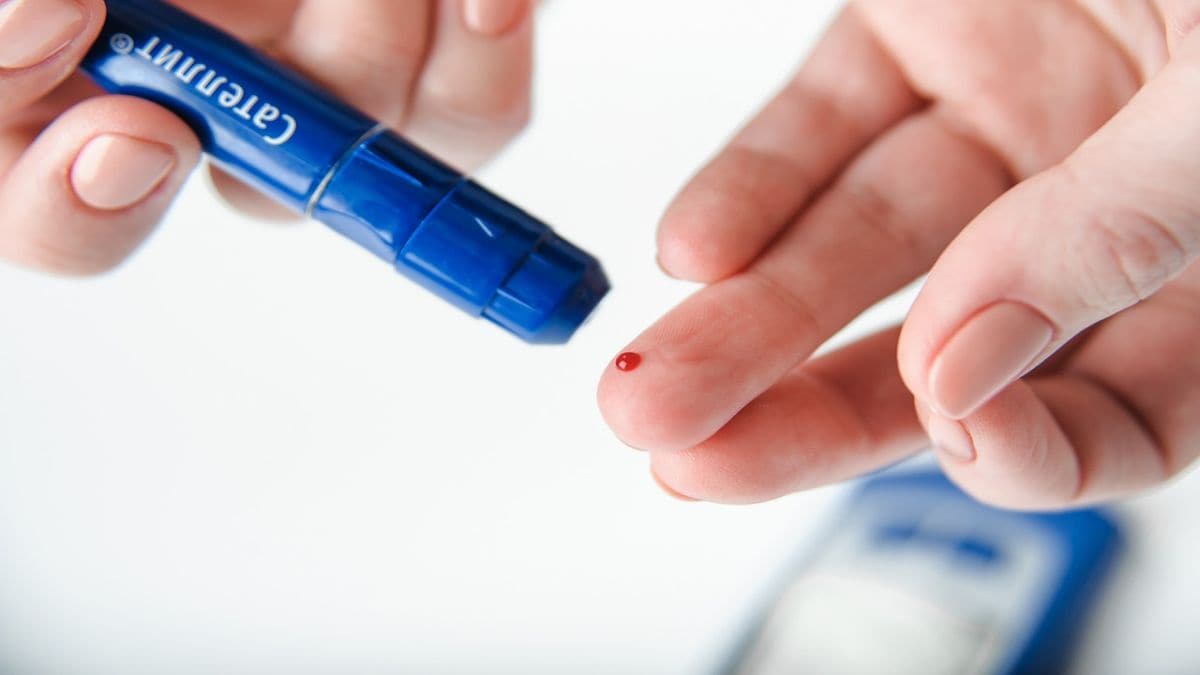Diabetes is one of the world’s leading diseases: in 2024, the number of people suffering from this condition increased to a whopping 800 million, with more than half of those aged over 30 who have the condition not receiving treatment. In fact, a study published in The Lancet last year found the global prevalence of diabetes has doubled since 1990 to 14 per cent from around seven per cent. Now, as the world battles with diabetes , medical experts have officially recognised malnutrition-related diabetes as a distinct form of the disease, known as Type 5 diabetes.
The move comes at the recently held International Diabetes Federation’s (IDF) World Diabetes Congress in Bangkok, Thailand. But what exactly is Type 5 diabetes and how does it vary from the previously known Type 1 and Type 2 diabetes? Here’s what we found out. At the recently concluded World Diabetes Congress in Bangkok, the International Diabetes Federation officially recognised Type 5 diabetes as a new condition.

The designation stems largely from the research and advocacy of Meredith Hawkins, MD, MS, professor of medicine, the Harold and Muriel Block Chair in Medicine, and founding director of the Global Diabetes Institute at Albert Einstein College of Medicine. “Malnutrition-related diabetes has historically been vastly under-diagnosed and poorly understood,” said Dr Hawkins. “The IDF’s recognition of it as Type 5 diabetes is an important step toward raising awareness of a health problem that is so devastating to so many people,” she added.
But what exactly is Type 5 diabetes? It is a malnutrition-related diabetes, typically affecting lean and malnourished teenagers and young adults in low- and middle-income countries. Today, there are an estimated 20-25 million people worldwide, mainly in Asia and Africa, who are afflicted by this disease. But, interestingly, this isn’t the first time that Type 5 diabetes or malnutrition-related diabetes has been spoken of.
It was first described years ago with the first cases being reported in Jamaica in 1955. At the time, malnutrition-related diabetes was defined as J-type diabetes. In 1985, the World Health Organization included it in its classification but then omitted it in 1999 due to a lack of follow-up studies and supporting evidence.
To understand how different is Type 5 diabetes from the other forms of it, let’s first understand the different types of this condition. There’s Type 1 diabetes , which is a chronic autoimmune disease where the body’s immune system mistakenly attacks and destroys the insulin-producing cells in the pancreas. This leads to a lack of insulin, which is essential for allowing glucose (sugar) to enter cells for energy.
Diabetes that is caused by obesity is known as Type 2 diabetes. Today, it accounts for the majority of diabetes cases in developing countries. Meanwhile, the American Diabetes Association classifies Type 3 diabetes as caused due to single genes, exocrine pancreatic diseases such as cystic fibrosis, or drug/chemical-induced diabetes.
Type 4 is gestational diabetes. According to Dr Hawkins, she first learned of malnutrition-related diabetes in 2005 while teaching at global health meetings. “Doctors from various countries told me they were seeing many patients with an unusual form of diabetes,” she said.
“The patients were young and thin, which suggested that they had Type 1 diabetes, which can be managed with insulin injections to regulate blood sugar levels. But insulin didn’t help these patients and in some cases caused dangerously low blood sugar. Nor did these patients seem to have Type 2 diabetes, which is typically associated with obesity.
It was very confusing.” This led her to do further research that revealed that there were differences between Type 5 diabetes and Type 1 and Type 2 diabetes. The study’s main findings revealed that those with this form of diabetes have a profound defect in the capacity to secrete insulin , which wasn’t recognised before.
Moreover, Type 5 diabetes is seen in people with extremely low body mass index (BMI) of less than 18.5 kg/m2, said Dr Nihal Thomas, senior professor, department of endocrinology, diabetes and metabolism, Christian Medical College, Vellore, who collaborated with Dr Hawkins on studying this condition. Dr Hawkins said, “Malnutrition-related diabetes is more common than tuberculosis and nearly as common as HIV/AIDS, but the lack of an official name has hindered efforts to diagnose patients or find effective therapies.
” She added that the formal recognition of Type 5 diabetes would help in battling this disease, which is often fatal. But how do you treat Type 5 diabetes? While there aren’t clear guidelines, data suggests that small amounts of insulin along with oral agents may be the most effective. Speaking to Medscape Medical News, she added, “I suspect that their nutrition should include much higher amounts of protein and lower amounts of carbohydrates, plus attention to deficient micronutrients.
.. but this needs to be carefully studied now that there is global will and an official mandate from [the International Diabetes Federation] to do so.
” The identification and formal recognition of Type 5 diabetes comes at a time when the global prevalence of diabetes keeps rising. A Lancet study found that rates of diabetes in adults doubled from approximately seven per cent to about 14 per cent between 1990 and 2022. It reported that 828 million people over the age of 18 have the condition, up approximately 630 million people over the three decades.
According to experts, growing levels of obesity are fuelling an epidemic of Type 2 diabetes. With inputs from agencies.
Health

What is Type 5 diabetes connected to malnutrition?

Medical experts have officially recognised a lesser-known diabetes, known as Type 5 diabetes. The condition is common among young, malnourished adults, with doctors estimating that there are an estimated 20-25 million people worldwide, mainly in Asia and Africa, afflicted by this form of the disease















